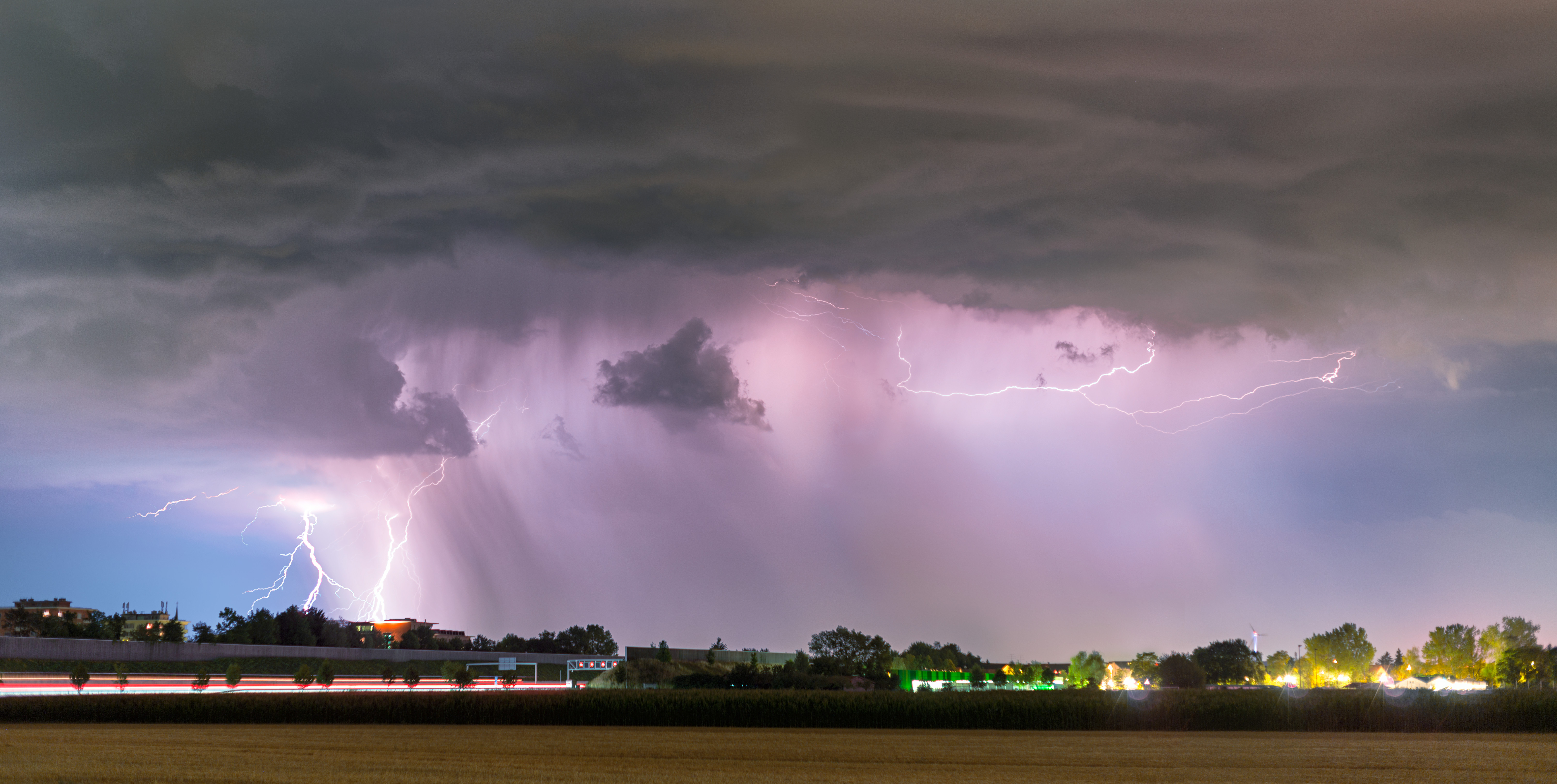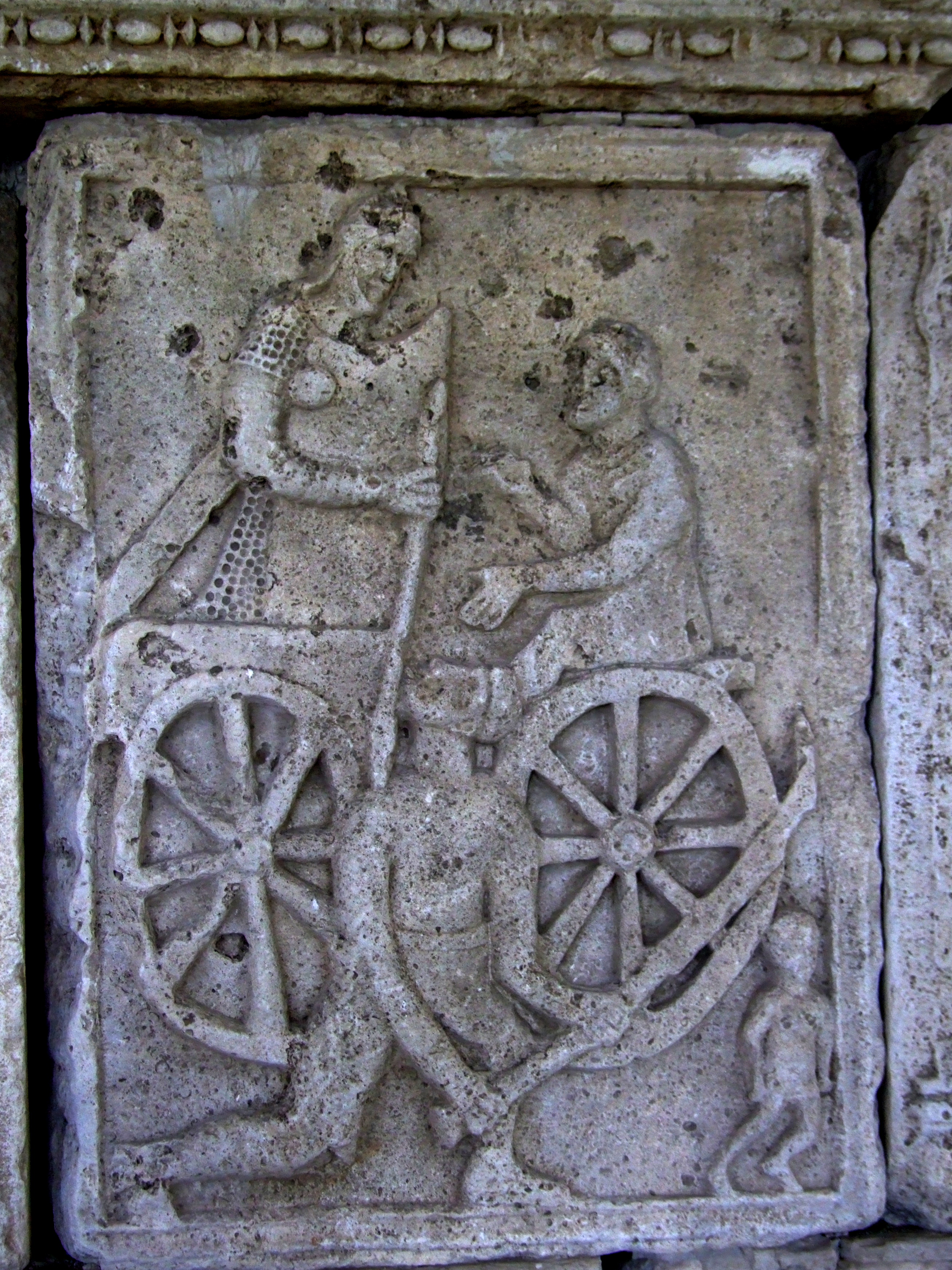|
Zis
Zis (Messapic: 𐌆𐌉𐌔) is a sky and lightning god in Messapian religion, occupying the most prominent role. The theonym is the equivalent and cognate of Albanian '' Zojz'' and Greek ''Zeus'', all from Proto-Indo-European '' *Di̯ḗu̯s'' 'sky god'. ''Zis'' appears in several votive inscriptions in the Messapic alphabet from Salento in Southern Italy. Name Attestation The divine name appears in several votive epigraphic texts in the Messapic alphabet from Salento is attested in inscriptions starting from the early 6th century BCE. Etymology ''Zis'' is the Messapic continuation of '' *Di̯ḗu̯s'', the name of the Proto-Indo-European daylight-sky-god. Cognates stemming from the noun ''*Di̯ḗu̯s'' with a similar phonological development are the Albanian '' Zojz'' and Greek ''Zeus''. In the Messapic ''Zis'', Albanian ''Zoj-z'', and Greek ''Ζεύς'', the original cluster ''*di̯'' of ''*di̯ḗu̯s'' underwent affrication to ''*dz''. The Tarentine god ''Dís'' ... [...More Info...] [...Related Items...] OR: [Wikipedia] [Google] [Baidu] |
Albanian Language
Albanian (Endonym and exonym, endonym: , , or ) is an Indo-European languages, Indo-European language and the only surviving representative of the Albanoid, Albanoid branch, which belongs to the Paleo-Balkan languages, Paleo-Balkan group. It is the native language of the Albanian people. Standard Albanian is the official language of Albania and Kosovo, and a co-official language in North Macedonia and Montenegro, where it is the primary language of significant Albanian minority communities. Albanian is recognized as a minority language in Italy, Croatia, Romania, and Serbia. It is also spoken in Greece and by the Albanian diaspora, which is generally concentrated in the Americas, Europe and Oceania. Albanian is estimated to have as many as 7.5 million native speakers. Albanian and other Paleo-Balkan languages had their formative core in the Balkans after the Indo-European migrations in the region. Albanian in antiquity is often thought to have been an Illyrian language for ob ... [...More Info...] [...Related Items...] OR: [Wikipedia] [Google] [Baidu] |
Lightning God
Polytheism, Polytheistic peoples from many cultures have postulated a thunder deity, the creator or personification of the forces of thunder and lightning; a lightning god does not have a typical depiction and will vary based on the culture. In Indo-European cultures, the thunder god is frequently depicted as male and known as the chief or King of the Gods, e.g.: Indra in Hinduism, Zeus in Greek mythology, Zojz (deity), Zojz in Albanian mythology, and Perun in ancient Slavic paganism, Slavic religion. Mediterranean * Adad, Bel (god), Bel, Ishkur, Marduk (Religion in Mesopotamia, Babylonian-Assyrian mythology) * Baʿal, Hadad (Canaanite religion, Canaanite and Phoenician religion, Phoenician mythology) * I Verbti (Albanian mythology) * Novensiles (Etruscan religion, Etruscan mythology) * Perëndi (Albanian mythology) * Set (mythology), Set (Egyptian mythology) * Shurdh (Albanian mythology) * Śuri (Etruscan mythology) * Tarḫunna (Hittite mythology and religion, Hittite mythol ... [...More Info...] [...Related Items...] OR: [Wikipedia] [Google] [Baidu] |
20- Zeus Di Ugento, Circa 530 A
The symbol , known in Unicode as hyphen-minus, is the form of hyphen most commonly used in digital documents. On most keyboards, it is the only character that resembles a minus sign or a dash, so it is also used for these. The name ''hyphen-minus'' derives from the original ASCII standard, where it was called ''hyphen (minus)''. The character is referred to as a ''hyphen'', a ''minus sign'', or a ''dash'' according to the context where it is being used. Description In early typewriters and character encodings, a single key/code was almost always used for hyphen, minus, various dashes, and strikethrough, since they all have a similar appearance. The current Unicode Standard specifies distinct characters for several different dashes, an unambiguous minus sign (sometimes called the ''Unicode minus'') at code point U+2212, an unambiguous hyphen (sometimes called the ''Unicode hyphen'') at U+2010, the hyphen-minus at U+002D and a variety of other hyphen symbols for various uses. Wh ... [...More Info...] [...Related Items...] OR: [Wikipedia] [Google] [Baidu] |
Altar
An altar is a table or platform for the presentation of religion, religious offerings, for sacrifices, or for other ritualistic purposes. Altars are found at shrines, temples, Church (building), churches, and other places of worship. They are used particularly in Christianity, Buddhism, Hinduism, and modern paganism. Many historical-medieval faiths also made use of them, including the Religion in ancient Rome, Roman, Religion in ancient Greece, Greek, and Norse paganism, Norse religions. Etymology The modern English language, English word ''wikt:altar#English, altar'' was derived from Middle English ''wikt:alter#Latin, altar'', from Old English ''wikt:alter, alter'', taken from Latin ''wikt:altare#Latin, altare'' ("altar"), probably related to ''wikt:adolere#Etymology 2, adolere'' ("burn"); thus "burning place", influenced by ''wikt:altus#Latin, altus'' ("high"). It displaced the native Old English word ''wikt:weofod#Old English, wēofod''. Altars in antiquity In antiquity, alta ... [...More Info...] [...Related Items...] OR: [Wikipedia] [Google] [Baidu] |
Rhomphaia
The rhomphaia () was a close-combat bladed weapon used by the Thracians as early as 350-400 BC. Rhomphaias were weapons with a straight or slightly curved single-edged blade. Although the rhomphaia was similar to the falx, most archaeological evidence suggests that rhomphaias were forged with straight or slightly curved blades, presumably to enable their use as both a thrusting and slashing weapon. The blade was constructed of iron and used a triangular cross section to accommodate the single cutting edge with a tang of rectangular cross section. Length varied, but a typical rhomphaia would have a blade of approximately and a tang of approximately . From the length of the tang, it can be presumed that, when attached to the hilt, this portion of the weapon would be of similar length to the blade. Usage Used almost exclusively by the Thracians, examples have been found dating from 300-400 BC. As a weapon, the rhomphaia was feared (like the falx) because of the cutting power afforde ... [...More Info...] [...Related Items...] OR: [Wikipedia] [Google] [Baidu] |
Thracian Language
The Thracian language () is an extinct and Attested language, poorly attested language, spoken in ancient times in Southeast Europe by the Thracians. The linguistic affinities of the Thracian language are Classification of Thracian, poorly understood, but it is generally agreed that it was an Indo-European languages, Indo-European language. The point at which Thracian became extinct is a matter of dispute. However, it is generally accepted that Thracian was still in use in the 6th century AD: Antoninus of Piacenza (pilgrim), Antoninus of Piacenza wrote in 570 that there was a monastery in the Sinai Peninsula, Sinai, at which the monks spoke Koine Greek, Greek, Latin, Syriac language, Syriac, Coptic language, Egyptian, and Bessian – a Thracian dialect. A classification put forward by Harvey Mayer, suggests that Thracian (and Dacian language, Dacian) belonged to the Baltic languages, Baltic branch of Indo-European, or at least is closer to Baltic than any other Indo-European br ... [...More Info...] [...Related Items...] OR: [Wikipedia] [Google] [Baidu] |
Weapon
A weapon, arm, or armament is any implement or device that is used to deter, threaten, inflict physical damage, harm, or kill. Weapons are used to increase the efficacy and efficiency of activities such as hunting, crime (e.g., murder), law enforcement, self-defense, warfare, or suicide. In a broader context, weapons may be construed to include anything used to gain a tactical, strategic, material, or mental advantage over an adversary or enemy target. While ordinary objects such as rocks and bottles can be used as weapons, many objects are expressly designed for the purpose; these range from simple implements such as clubs and swords to complicated modern firearms, tanks, missiles and biological weapons. Something that has been repurposed, converted, or enhanced to become a weapon of war is termed ''weaponized'', such as a weaponized virus or weaponized laser. History The use of weapons has been a major driver of cultural evolution and human history up to ... [...More Info...] [...Related Items...] OR: [Wikipedia] [Google] [Baidu] |
Fire
Fire is the rapid oxidation of a fuel in the exothermic chemical process of combustion, releasing heat, light, and various reaction Product (chemistry), products. Flames, the most visible portion of the fire, are produced in the combustion reaction when the fuel reaches its ignition point temperature. Flames from hydrocarbon fuels consist primarily of carbon dioxide, water vapor, oxygen, and nitrogen. If hot enough, the gases may become ionized to produce Plasma (physics), plasma. The color and Intensity (heat transfer), intensity of the flame depend on the type of fuel and composition of the surrounding gases. Fire, in its most common form, has the potential to result in conflagration, which can lead to permanent physical damage. It directly impacts land-based ecological systems worldwide. The positive effects of fire include stimulating plant growth and maintaining ecological balance. Its negative effects include hazards to life and property, atmospheric pollution, and water ... [...More Info...] [...Related Items...] OR: [Wikipedia] [Google] [Baidu] |
Vatër
The (or ; sq-definite, vatra or ) is the domestic hearth in Albanian culture. The fire of the domestic hearth (') holds divine attributes in Albanian beliefs, being considered the sustainer of the continuity between the world of the living and that of the dead, and ensuring the continuity of the tribe () from generation to generation. The absence of fire in a house is traditionally considered a great curse. In Albanian folk beliefs the fire hearth is the symbol of fire as the offspring of the Sun ( Dielli). In Albanian tradition the deified fire ('' zjarri'') was evidently also called with the theonym Enji, the god to whom Thursday – – was dedicated in the Albanian language.; ; ; ; ; . Etymology The Albanian term (or ; sq-definite, vatra or ), "hearth", "fireplace", is derived from Proto-Albanian , obtained through the ''*o'' to ''*vo-/*va-'' development which is observed exclusively in the Albanian language as the dipthongization of *o in the two major dialect groups ... [...More Info...] [...Related Items...] OR: [Wikipedia] [Google] [Baidu] |
Albanian Folk Beliefs
Albanian paganism comprises the pagan customs, beliefs, rituals, myths and legends of the Albanian people. The elements of Albanian mythology are of ancient Paleo-Balkanic origin and almost all of them are pagan. Ancient paganism persisted among Albanians, and especially within the inaccessible and deep interior – where Albanian folklore evolved over the centuries in a relatively isolated tribal culture and society – it has continued to persist, or at most it was partially transformed by the Christian, Muslim and Marxist beliefs that were either to be introduced by choice or imposed by force.; ; ; . The Albanian traditional customary law ( Kanun) has held a sacred – although secular – longstanding, unwavering and unchallenged authority with a cross-religious effectiveness over the Albanians, which is attributed to an earlier pagan code common to all the Albanian tribes. Indeed, the Kanun contains several customary concepts that clearly have their origins in pagan beliefs, ... [...More Info...] [...Related Items...] OR: [Wikipedia] [Google] [Baidu] |
Sacred Tree
A sacred tree or holy tree is a tree which is considered to be sacred, or worthy of spiritual respect or reverence. Such trees appear throughout world history in various cultures including the ancient Hindu mythology, Greek, Celtic and Germanic mythologies and is central to the beliefs of The Church of Jesus Christ of Latter-day Saints. They also continue to hold profound meaning in contemporary culture in places like Japan (''shinboku''), Korea (''dangsan namu''), India (bodhi tree), and the Philippines, among others. Tree worship is core part of religions which include aspects of animism as core elements of their belief, which is the belief that trees, forests, rivers, mountains, etc. have a life force ('anime', i.e., ''alive''). An example of the continued importance of sacred trees in contemporary urban culture is the 700-year old camphor growing in the middle of Kayashima Station. Locals protested against moving the tree when the railway station had to be expanded, so the s ... [...More Info...] [...Related Items...] OR: [Wikipedia] [Google] [Baidu] |









